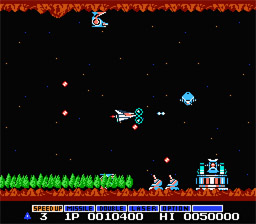To make the game more balanced in terms of resources, I would modify the game so that all the power-ups and abilities are not lost when the player is hit. Currently, when the player is hit by only one enemy, they instantly die. Once they die, they must restart at the pervious check point and they lose all their pervious abilities. This makes the game very difficult as the player must start from scratch with building up their ships abilities. I would change this rule to make it easier for the player. For example, when the player dies, maybe let the player keep all of their abilities. That way they can continue to build up their abilities instead of starting over.
Another way I would modify the game would be to not have the player die in one hit. Maybe have the player lose their strongest ability for every hit they receive. For example if the player had speed, double and laser abilities, they would lose the laser ability if hit once. If hit the second time they would lose the double ability and so forth. Once they have lost all their abilities, then they die in the usual manner. Personally, I feel that this method is more “fair” to the player as if they are hit; they have a greater chance to reclaim the more powerful abilities, instead of just losing everything. This would also help they player progress further into the games levels as the abilities would count as a kind of resource for the player to continue if hit (similar the mushroom in Super Mario Bros). With these extra resources the player will be more likely to reach the in-game checkpoint, making level progression faster.

